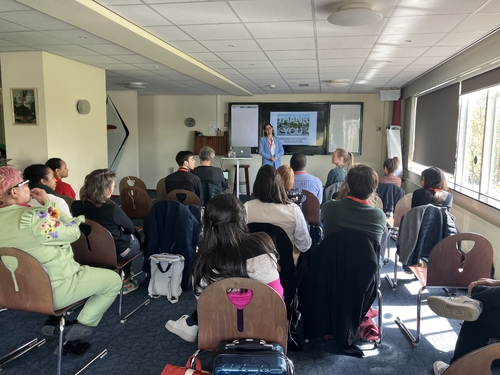What is urban diversity? In this presentation, Diana Della Pietra (MOST Architecture) talks about diversity as "the coexistence of different urban types such as restaurants, houses, churches, museums and so on" and concludes with this definition: “Diversity is the probability that any two different things meet”. This definition makes it a mathematical concept, and enables to actually measure urban diversity. Diana shares about the Diversity Index Method which consists of the following steps:
- Defining urban diversity
- Collecting data
- Performing the analysis: Classification, Granularity & Diversity Index
- Visualisation of the results
- Validation of the results
- Employing the empirical results
This methodology makes it possible to make predictions for urban policies. The researchers suggest a more localized approach to urban planning.
Presentation by Diana Della Pietra
AMS Institute, Scientific conference 'Reinventing the City - Blueprints for messy cities? Navigating the interplay of order and complexity'
The Old & New City (Diversity & Inclusion) - 23 April 2024
Read more
Baciu, D. C., & Pietra, D. D. (2021, May 17). Cycles of Diversification in Urban Environments: Evidence from Sassi, UNESCO World Heritage Site, Italy. https://doi.org/10.31219/osf.io/f43xh
Baciu, D.C., Mi, D., Birchall, C. et al. Mapping diversity: from ecology and human geography to urbanism and culture. SN Soc Sci 2, 136 (2022). https://doi.org/10.1007/s43545-022-00399-4
